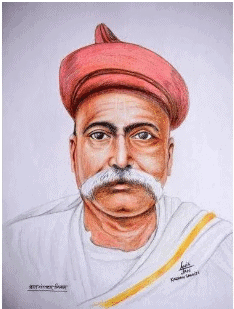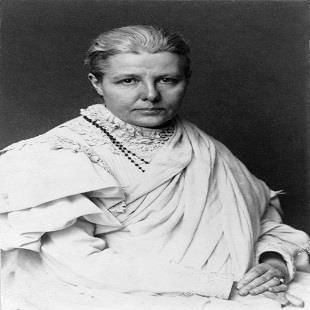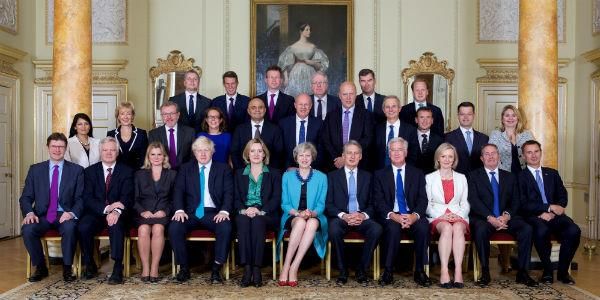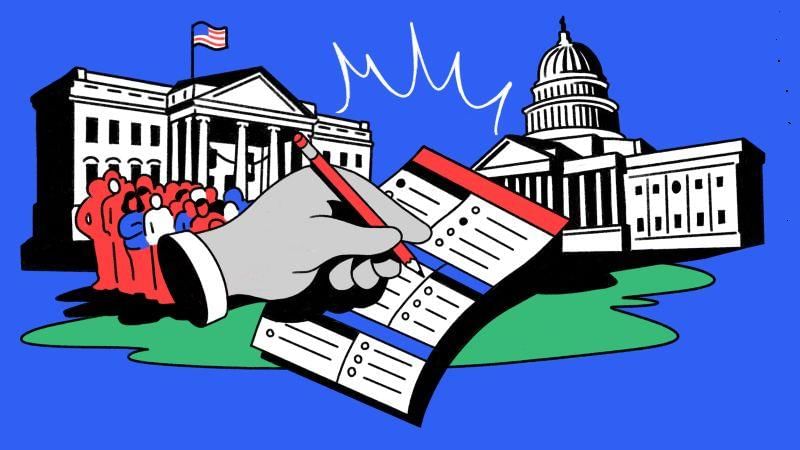Revision Notes: Lucknow Pact - Home Rule League and August Declaration | History and Civics Class 10 ICSE PDF Download
| Table of contents |

|
| Lucknow Pact |

|
| Home Rule League Movement |

|
| August Declaration |

|
| Montague–Chelmsford Reforms or the Government of India Act, 1919 |

|
Lucknow Pact
During the First World War (1914–18), several important political events in India contributed to the strengthening of national sentiments. Among these were the signing of the Lucknow Pact between the Congress and the Muslim League, the establishment of the Home Rule League Movement, and the August Declaration.
Causes Leading to the Signing of the Lucknow Pact
- International Events: The Sultan of Turkey, considered the ‘Caliph’ or religious leader of Muslims, was seen as a protector of Muslim sacred sites, many of which were located in the Turkish Empire. During World War I, Britain was fighting against Turkey, causing outrage among Indian Muslims. This led them to support the Congress in its efforts for self-government in India.
- National Events: Various political developments in India stirred anger among Muslims towards the British. The annulment of the Partition of Bengal, the release of Bal Gangadhar Tilak from prison, the arrest of prominent Muslim leaders under the Seditious Meeting Act, and the spread of nationalist ideas by Muhammad Ali and Shaukat Ali contributed to the growing unity between the Muslim League and the Congress.
- Changes in the Objective of the Muslim League: Initially, the Muslim League had a pro-British stance. However, it later called for ‘a system of self-government under the aegis of the British crown’, which fostered renewed cooperation between the League and the Congress. Role of Key Figures: Figures like Annie Besant and Tilak played crucial roles in bringing the Congress and the Muslim League together. Their efforts, along with the factors mentioned above, culminated in the historic signing of the Lucknow Pact in 1916.
Features of the Lucknow Pact
In 1916, the Muslim League and the Congress convened their sessions together in Lucknow, where they collectively endorsed a joint scheme for political reforms, leading to the formation of the Lucknow Pact.
The key demands outlined in the Lucknow Pact included:
- Abolishing the India Council under the Secretary of State, with the Secretary assisted by two under-secretaries, one of whom should be an Indian.
- Ensuring that four-fifths of the members of the Provincial Legislature are directly elected, with one-fifth nominated, and providing for a separate electorate for Muslims.
- Guaranteeing adequate representation for minorities in elected bodies.
- Exempting India’s defence (including war and treaty-making) and foreign affairs from Imperial Legislation.
- Granting certain autonomy to provinces.
- Appointing Indians to half of the Viceroy’s Executive Council.
- Separating the Judiciary from the Executive, preventing executive members from exercising judicial powers.
Importance of the Lucknow Pact
The Lucknow Pact was significant for several reasons:
- Hindu-Muslim Unity: The Congress party agreed to the idea of separate electorates for Muslims, while the Muslim League accepted the principles of election and majority rule. This compromise fostered unity between Hindus and Muslims.
- Reunification of Nationalists: The signing of the Lucknow Pact brought together the Early and Assertive Nationalists within the Congress party. Previously, these factions had split during the 1907 session in Surat.
- Strengthening the Indian National Movement: The collaboration between the Muslim League and the Congress strengthened the Indian National Movement. Before this, the British government had been suppressing the national movement using a ‘divide and rule’ policy.
- British Response: The British government recognized the need to pacify Indians during the First World War to secure their support. In response, they announced the Declaration of 20 August, promising to gradually develop self-government institutions in India.
Limitations of the Lucknow Pact
- The Lucknow Pact was not inclusive of the masses; it was limited to wealthy and educated Hindus and Muslims.
- By accepting the principle of separate electorates for Muslims, the Congress weakened the political unity of the nation.
- The Pact granted Muslims disproportionate representation in the Council, exceeding their population share.
- It served merely as a temporary reconciliation between the Congress and the League. Despite Congress's efforts, the League continued to exist as a separate entity with a communal perspective.
Home Rule League Movement
The Home Rule Movement was initiated by Tilak and Annie Besant to demand self-government within the British Empire. The movement was prompted by several factors, including:
- Economic Hardship: The First World War caused inflation, worsening the plight of the poor in India. The government imposed heavy taxes to fund war expenditures.
- Need for Pressure: It became clear that the government would not grant political concessions to Indians without pressure.
- Contradiction of Ideals: The British and American governments promoted the war as a struggle for democracy, while the British denied liberty and democracy to Indians. This contradiction fueled the belief that Indians had to seize their freedom.
- Shift in Nationalist Sentiment: Assertive nationalists felt that the Congress had become passive, making it impossible to launch mass agitations under its leadership.
In response to these factors, Bal Gangadhar Tilak and Annie Besant launched the Home Rule Movement, believing that the government would only respond to their demands under pressure.
Bal Gangadhar Tilak

- Early Life and EducationBal Gangadhar Tilak was born on July 23, 1856, in Ratnagiri, Maharashtra, into a Brahmin family. His father, Gangadhar Tilak, was a schoolteacher and a notable figure in the local community. After his father’s death, the family faced financial difficulties, but his mother, Rukmini, ensured that Tilak received a good education. He excelled in school and went on to study mathematics at the University of Bombay (now Mumbai). Tilak later pursued law at the University of Pune. He became actively involved in social and political issues during his college days.
- Early Career After completing his education, Tilak worked as a professor of mathematics at the Fergusson College in Pune. However, his passion for social reform and politics led him to journalism and activism. He, along with his colleagues, started the Deccan Education Society to promote education among Indians.
- Journalism and Political Activism Tilak began writing for various newspapers, expressing his views on social and political issues. He later founded two newspapers, Kesari in Marathi and Mahratta in English, to promote his ideas. Through these platforms, he advocated for self-rule (swaraj), social reforms, and the upliftment of the Indian society.
- Role in the Indian National Movement Tilak emerged as a prominent leader in the Indian National Congress, advocating for more radical approaches to attain self-rule. He was a strong proponent of swaraj and believed it was the birthright of every Indian. His famous slogan, “Swaraj is my birthright, and I shall have it,” inspired many Indians to join the freedom struggle.
- Home Rule League MovementBal Gangadhar Tilak played a crucial role in popularizing the Home Rule League Movement initiated by Annie Besant. He extended the movement from Pune to all of Maharashtra and the central provinces, linking the concept of swaraj with the movement. Tilak preached the movement through his newspapers, Kesari and Mahratta and gave fiery nationalist speeches, urging people to support the cause of self-rule.
- Later Years and Legacy Tilak continued to be an influential figure in Indian politics until his death on August 1, 1920. He is remembered as one of the key architects of the Indian freedom struggle, and his ideas and slogans continue to inspire people even today.
Annie Besant and the Home Rule Movement

- Annie Besant was born in Ireland but became deeply interested in Indian culture and philosophy. She led the Theosophical Society in Chennai.
- Initially, she was not satisfied with the approaches of the Early Nationalists in India. During her visit to England from 1908 to 1913, she was inspired by the Home Rule Movement in Ireland.
- After joining the Indian National Congress in 1914, Besant began sharing her ideas through articles in newspapers like Commonweal and New India .
- In September 1916, she launched the Home Rule League Movement in Chennai, aiming to promote self-government in India. She established around 200 branches of the League across the country.
- The movement focused on political education and discussions to achieve self-governance within the British Empire through constitutional means.
- Besant circulated pamphlets, newsletters, and raised funds to support the movement.
- The Home Rule Movement, under her leadership, sought to attain self-government within the British Empire using legal and constitutional methods.
Decline of the Movement
- During the war years, the British government sought to placate early Nationalists with the Declaration of August 1917, promising gradual self-governance. This led to the decline of the movement.
- The early reformers were satisfied with the promise of reforms.
- The reform scheme announced in July 1917 divided the nationalists, with some supporting it and others rejecting it.
- By the end of 1917, Tilak's absence after his trip to England and the lack of firm leadership from Annie Besant contributed to the movement's decline.
Impact of the Home Rule League Movement
- Infused Nationalism: The Home Rule Movement instilled a strong sense of nationalism among the masses, especially as the Congress weakened.
- People’s Movement: It transformed the national movement into a grassroots-level struggle, involving ordinary people.
- Training Ground: The movement trained many individuals who later became key figures in the Indian National Movement.
- Pressuring for Self-Governance: It applied pressure on the government to grant self-governance, leading to the announcement of gradual self-governing institutions in India.
August Declaration
The August Declaration was a response to the pressure from the Home Rule League Movement, drafted by Secretary of State Edwin Montague. It promised eventual self-government for Indians within the British Empire.
Reactions to the Declaration:
- Early Nationalists: They hailed it as the 'Magna Carta' of India, viewing it as the first step towards democracy.
- Assertive Nationalists: They criticized it, believing that slow-paced self-government would not be politically beneficial for India.
- Congress and League: They feared demands for separate electorates from different racial groups.
- Depressed Classes: Leaders demanded separate electorates for fair representation in councils.
- Sikhs: They sought one-third of seats in the Punjab Legislative Assembly, citing their contributions to the British army, land ownership, and land revenue payments.
Montague–Chelmsford Reforms or the Government of India Act, 1919
The Government of India Act, 1919, was enacted based on the recommendations of Edwin Montague and Lord Chelmsford, the Viceroy of India. The main provisions of the Act included:
Central Government Accountability to British Parliament

- The Secretary of State for India was tasked with overseeing the affairs of the Government of India.
- The central legislature was composed of two chambers: the Council of States and the Indian Legislative Assembly, with the latter having the authority to vote.
- The central legislature had the power to create laws applicable to all of India and had financial authority, except for certain specific expenditure items.
- The Governor General held the authority to summon, prorogue, and dissolve the legislative chambers.
- The control previously held by the Secretary of State over Indian affairs was diminished.
- The number of Indian representatives in the Council of the Viceroy was increased to three.
- For the first time in India, provisions were made to establish a Public Service Commission.
Provincial Legislative Councils
According to the Government of India Act, 1935, a Legislative Council was to be established, comprising both elected and nominated members. The term of office for the Council was set at three years.
Dual Government or Dyarchy
- The principle of dyarchy was introduced in the provinces. The subjects to be dealt with by the provinces were now divided into two parts—reserved subjects and transferable subjects.
- Reserved subjects, such as finance, law and order, and irrigation, were to be managed by the Governor with the assistance of his Executive Council.
- Transferable subjects, including public health, education, and agriculture, were to be overseen by the Governor with the help of a Council of Ministers chosen by him. These ministers would be responsible to both the Governor and the Legislature. The Governor retained the authority to overrule his ministers and had complete control over financial matters.
Elections

- The system of indirect election was replaced with direct election.
- Communal franchise and separate electorates were introduced for Sikhs, Europeans and Anglo Indians.
Limitations of the Act
- The subjects were divided irrationally under the system of dyarchy. For example, while agriculture was a transferable subject, land revenue and irrigation were made reserved subjects.
- The loyalties of ministers and councillors were divided. While one was loyal to the Government, the other was responsible to the Indian electorate.
- The ministers did not have vast powers. They were not given complete control over any subject. The Governor was the supreme authority.
- Ministers did not have adequate funds to carry out their functions. They had to depend on the Finance Minister. The latter did not have sympathy with the people of India as he represented the vested interests of the British government.
The Congress declared reforms as inadequate and disappointing. However, it accepted the reforms to establish a responsible government in India.
|
28 videos|104 docs|27 tests
|
FAQs on Revision Notes: Lucknow Pact - Home Rule League and August Declaration - History and Civics Class 10 ICSE
| 1. What was the significance of the Lucknow Pact in Indian history? |  |
| 2. What were the main objectives of the Home Rule League Movement? |  |
| 3. What did the August Declaration of 1917 entail for India? |  |
| 4. What were the key features of the Montague-Chelmsford Reforms included in the Government of India Act, 1919? |  |
| 5. How did the Lucknow Pact and the Home Rule League Movement influence the Indian independence struggle? |  |



















